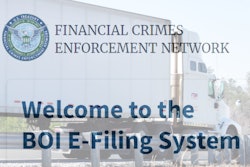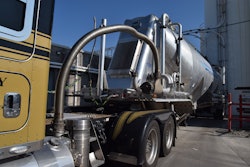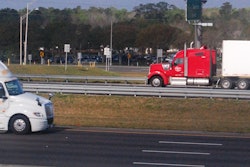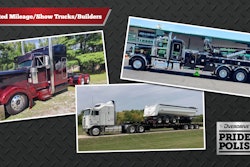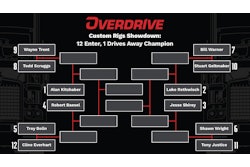There are different ways to set up an owner-operator business. Each business form has its advantages and disadvantages, and one may work better than another for your particular situation.
The advice of a CPA, tax attorney or business services provider who specializes in trucking is recommended before a decision is made.
Here are four common types of owner-operator businesses:
Sole proprietor. This is any individual that is self-employed in a for-profit business that has only one owner. It is the least expensive, simplest and least regulated type of business structure. Unlike the other forms, there is no formal setup, as it begins when you start earning revenue as an owner-operator. Many leased owner-operators stay with this form, though it has its downsides.
One is liability protection. In the eyes of the law, the owner of a sole proprietorship is the business. In the event of an accident, you could be liable for millions of dollars in damages and medical expenses. That’s why it’s important to carry bobtail insurance.
Also, debt incurred by the business is the responsibility of the owner. There are generally no tax-specific advantages to being a sole proprietor.
Partnership. A partnership is similar to a sole proprietorship but is owned by more than one person. The individuals forming the partnership are taxed separately, as they would be if they were sole proprietors.

A partnership also can be formed easily, but a written and agreed upon partnership agreement is highly recommended. The partnership agreement needs to spell out duties, responsibilities and financial terms. This agreement is also relied upon should the partnership need to be dissolved.
The advantage of a partnership might be in having access to extra start-up capital or in providing a co-driver who can help you drive more miles. To be successful, each co-driving partner should bring something to the table, such as financial skills or mechanical expertise. Each partner is liable for the actions of the other in a partnership.
There are two types of partnerships:
- Family or non-family partnership. Members of a family can be partners. However, family members (or any other person) will be recognized as partners only if certain Internal Revenue Service criteria are met.
- Husband-wife partnership. If spouses operate a business together and share in the profits and losses, they may be considered partners whether or not they have a formal partnership agreement.
It is worth considering instead of forming a partnership with equal rights for all partners, that the majority partner, or the partner with the most risk invested, form a sole proprietorship and then hire any help they need, using a payroll service to assist with compensating the employee or contractor fairly. This helps to avoid the risk of another partner ruining the business you’ve built.
Limited Liability Company. The LLC is one of the most common business structures for independent owner-operators. The LLC offers protection for owners, and profits pass through to the individual owner’s personal income tax return. This means you are not subject to double taxation such as in a C Corp.
However, an LLC can have an S Corp designation, in which case taxes are filed as an S Corp, offering several advantages on the tax and investment fronts.
[Related: How, and when it makes sense, to file as an S Corp to save on self-employment taxes]
Corporation. A corporation is different from a sole proprietorship or partnership because it is treated as a separate entity from its owners, shareholders and employees. Incorporation laws differ from state to state. Setup cost varies from a few hundred dollars to a few thousand. In addition, incorporating requires numerous forms, records and formal annual meetings. Incorporating outside your home state may lead to multi-state tax filing requirements.
Normally, incorporating is not a good choice for owner-operators because costs usually exceed benefits.
In a C Corp designation, the corporation pays taxes on the income it earns. The driver is an employee of the corporation and should receive a payroll wage W-2 from the corporation. If the driver does not receive a payroll wage W-2, the amount taken out of the corporation is a dividend and subject to double taxation both at the corporate and individual level.
To set up a C Corp, you must file articles of incorporation with your state. Do-it-yourself kits are available, but it’s best to hire an attorney to avoid mistakes and to address state laws.
Do you need an Employer Identification Number (EIN)?
For most owner-operators, the answer is yes. Generally, if you answer yes to any of the following you'll need an EIN:
- Do you have employees?
- Do you operate your business as a corporation or a partnership?
- Do you file any of these tax returns: Employment, Excise, Alcohol, Tobacco and Firearms, Heavy Highway Use Tax (on Form 2290, including most owner-operators)?
- Do you withhold taxes on income, other than wages, paid to a nonresident alien?
- Do you have a Keogh plan?
- Are you involved with any of the following types of organizations?
- Trusts, except certain grantor-owned revocable trusts, IRAs, exempt organization business income tax returns
- Estates
- Real estate mortgage investment conduits
- Nonprofit organizations
- Farmers’ cooperatives
- Plan administrators
Also, if you provide health insurance for employees, you may need a National Standard Employer Identifier for electronic health transactions.
Read next: 'Beneficial Ownership Information' reporting required of owner-operators



